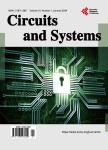SAC-TA: A Secure Area Based Clustering for Data Aggregation Using Traffic Analysis in WSN
SAC-TA: A Secure Area Based Clustering for Data Aggregation Using Traffic Analysis in WSN作者机构:Department of Electronics and Communication Engineering SSM Institute of Engineering and Technology Dindigul India
出 版 物:《Circuits and Systems》 (电路与系统(英文))
年 卷 期:2016年第7卷第8期
页 面:1404-1420页
学科分类:0809[工学-电子科学与技术(可授工学、理学学位)] 08[工学]
主 题:Data Aggregation False Data Injection Attacks Malicious Nodes One-Time Key Generation Secure One-Time (SOT) Key and Wireless Sensor Networks (WSNs)
摘 要:Clustering is the most significant task characterized in Wireless Sensor Networks (WSN) by data aggregation through each Cluster Head (CH). This leads to the reduction in the traffic cost. Due to the deployment of the WSN in the remote and hostile environments for the transmission of the sensitive information, the sensor nodes are more prone to the false data injection attacks. To overcome these existing issues and enhance the network security, this paper proposes a Secure Area based Clustering approach for data aggregation using Traffic Analysis (SAC-TA) in WSN. Here, the sensor network is clustered into small clusters, such that each cluster has a CH to manage and gather the information from the normal sensor nodes. The CH is selected based on the predefined time slot, cluster center, and highest residual energy. The gathered data are validated based on the traffic analysis and One-time Key Generation procedures to identify the malicious nodes on the route. It helps to provide a secure data gathering process with improved energy efficiency. The performance of the proposed approach is compared with the existing Secure Data Aggregation Technique (SDAT). The proposed SAC-TA yields lower average energy consumption rate, lower end-to-end delay, higher average residual energy, higher data aggregation accuracy and false data detection rate than the existing technique.



